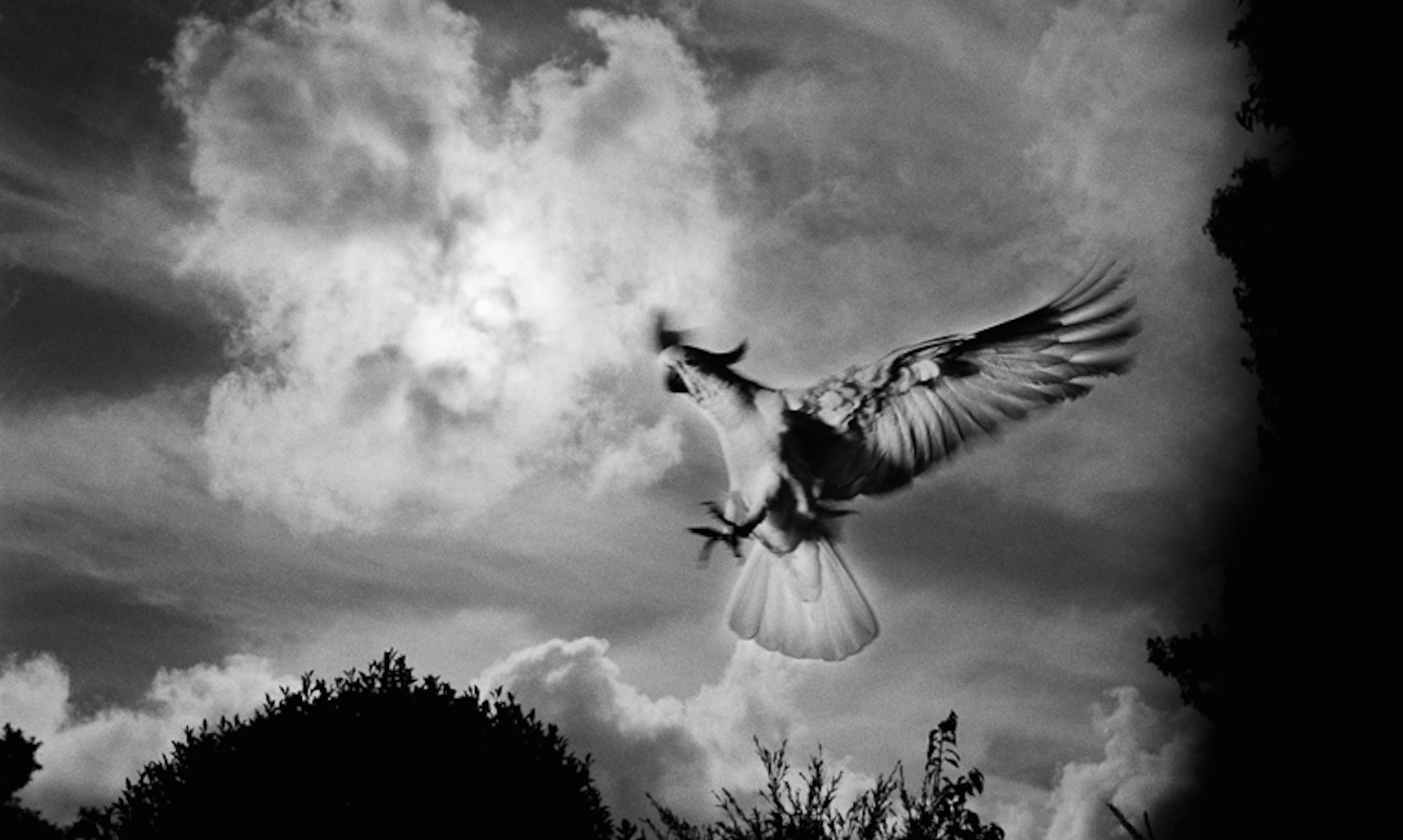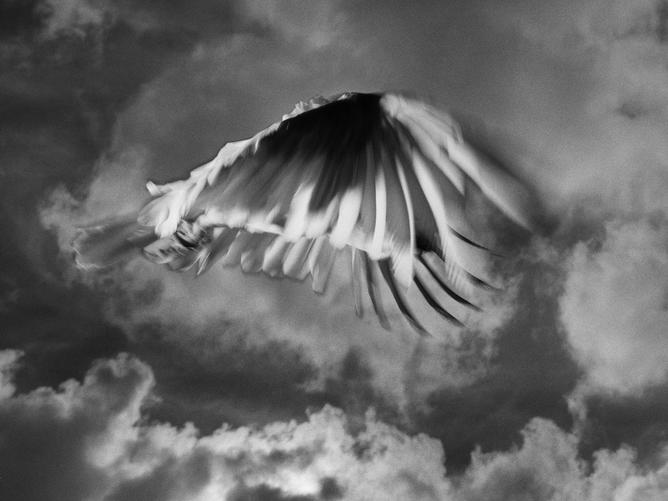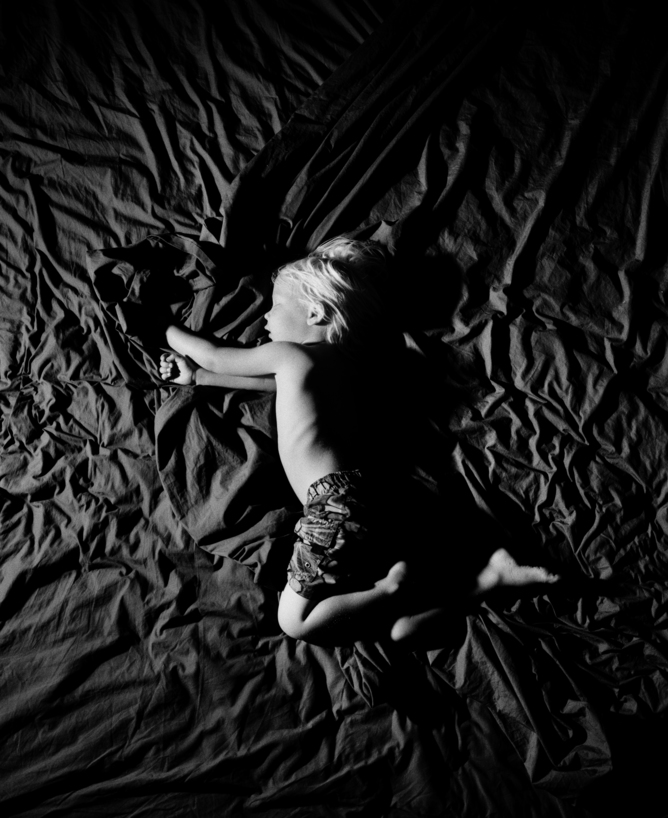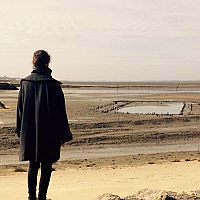
Trent Parke, Cockatoo backyard, Newcastle 2011. © Trent Parke/Magnum Photos
The show – by Australia’s only Magnum photographer – is an immersive multimedia display over a series of curtained-off dark rooms. Shot over seven years and augmented by images taken by Parke’s wife, photographer Narelle Autio, the installation documents Parke’s quest to reclaim lost memories of his childhood.

Trent Parke, Limestone Coast, South Australia, 2007. © Trent Parke/Magnum Photos
The Magnum cooperative is world-renowned for encouraging and showcasing, in its own words, “the idiosyncratic mix of reporter and artist” – a description that could have been tailor-made for Parke. He was a sports journalist for The Australian, before going freelance at the turn of the century.
Released from editorial restrictions, he pursued more individual and artistic projects, garnering an international reputation and the attention of Magnum alumni. A 1957 statement from Henri Cartier-Bresson, one of the cooperative’s renowned founders, is recorded in Magnum’s history:
The Black Rose is Parke’s story, perhaps the most personal one he could share, but one that presents universal questions of life and death, past and present, tentatively leading us into thoughts of our place in the future.

Trent Parke, Cockatoo, Newcastle, New South Wales, 2011. © Trent Parke/Magnum Photos
This relocation has provided a new perspective on the past, allowing him to launch into the project which has spanned seven years and thousands of rolls of film (he rarely uses digital).
We become part of the development process, as though by passing through the blackout curtains we are entering his darkroom and directly participating in his ruminative discourse. There is little leeway for divergent interpretation, little flexibility to guess or hypothesise the artist’s intent.
He’s there, and it’s fixed: his face appearing in the developing bath, his voice over the commentary, his image at different ages and stages becoming as familiar as a relative’s. Alongside these devices are exquisite photographs displayed like the records of a natural historian’s field trip into a new alien environment: objective, inquisitive, informed.

Trent Parke, Fever, Dash, Adelaide, 2014. © Trent Parke/Magnum Photos
The universal connections of this experience is extended to ambiguous images from nature: dirt patterns become prophecy; tree trunks reach and contort like dancers, white and flattened by the flash; bugs caught circling a street light could be planets orbiting an unknown star.
Perhaps the most macabre of these are haunting images of dead rats and mice, trapped and desiccated, which represent figures from Parke’s early nightmares. The threat now passed, they are preserved in a non-toxic two-dimensional medium: collected, curated and pinned to the wall in full taphonomic detail. A taxonomy of memories.
This examination of personal leitmotifs is presented like an intriguing puzzle the artist grapples with, the sadness overwhelmed by the beauty of his images, the delight he shows in many of the images of his children, an almost comic sensibility pervading some of the series towards the end, namely The Absurdity of Life. There’s no alternative. You just have to laugh.
Unexpected narratives emerge, illustrating recovered incidences like a damaged file retrieved from a dodgy hard-drive. The spaces within the gallery are also used effectively to emphasise this practice. We are literally steered into the eternal struggle for survival between a fox and a rabbit.
Death, like an unshakable companion, is present throughout this exhibition. But the triumph of this Wunderkammer of curiosities is Parke’s examination of the serendipitous beauty and wonder to be found in the everyday, the brilliantly ordinary struggle for life.
Whether it is turtles breeding, the way light behaves when trapped in bubbles or a cockatoo’s miraculous mid-air acrobatics in the backyard, Parke has captured and celebrates the random wonder of his environments, recording the repetition of pattern and form within the natural world.
We are reminded of a guest of the last Adelaide Festival of Ideas in 2013, Lawrence Weschler and his typology of convergences: is there meaning behind these similarities, this naturally occurring symbolism surrounding us?
The Dark Rose is a moving and beautiful exposition, elucidated further by the catalogue essays from the gallery’s curators, Julie Robinson and Maria Zagala. Parke may still be on a quest to understand his memory and trace his origins in the wind.
In doing so, like the most ardent explorers of the natural world, his greatest achievement is perhaps simply making it home.


